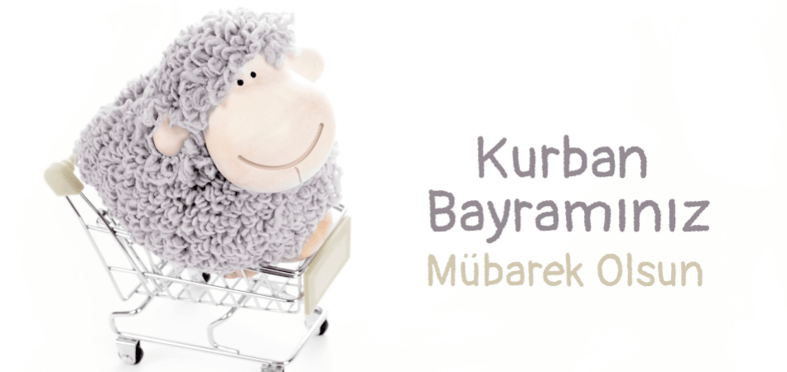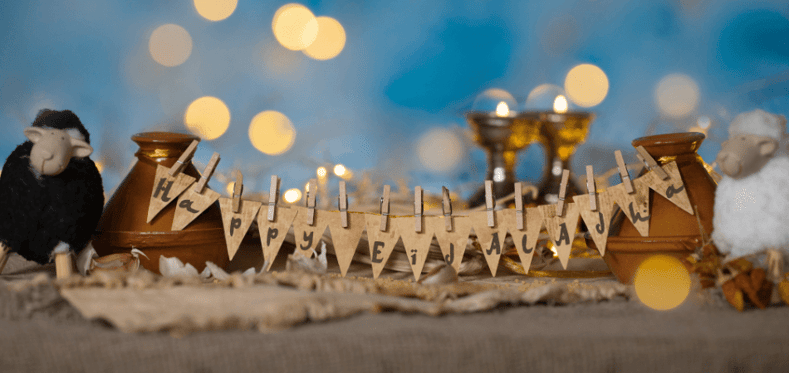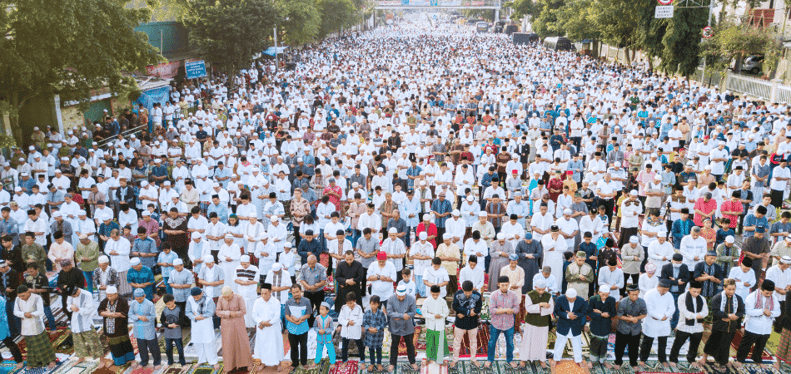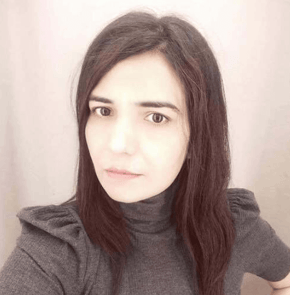Table of Contents
Introduction
Eid ul Adha, also known as the Festival of Sacrifice, is a significant Islamic celebration observed worldwide.
It commemorates Prophet Ibrahim ( AS) obedience to God, symbolized by his willingness to sacrifice his son.
This article explores the history, significance, and rituals of Eid ul Adha, highlighting its cultural and religious importance.
We will delve into the festival's origins, its connection to Prophet Ibrahim (AS) story, and its role as a time for reflection, gratitude, and solidarity.
The article also covers the symbolic act of animal sacrifice, the spiritual themes of sacrifice and faith, and the communal aspects of Eid ul Adha, including prayer, feasting, and acts of charity.
Additionally, we will provide interesting facts about the festival, showcasing its diversity and global observance.
By the end of this article, you will gain a comprehensive understanding of Eid ul Adha's historical, spiritual, and cultural significance, as well as its associated traditions and customs.
The Historical Background
Eid ul Adha, also known as the Feast of Sacrifice, holds significant historical and religious importance for Muslims worldwide.
Its origins can be traced back to the story of Prophet Ibrahim Abraham (AS) as depicted in Islamic tradition.
Connections to the story of Prophet Ibrahim Abraham (AS)
According to Islamic beliefs, Prophet Ibrahim (AS) was commanded by God to sacrifice his beloved son, Ismail AS, as a test of his faith and obedience.
As Prophet Ibrahim AS prepared to carry out God's command, he was miraculously provided with a ram to sacrifice instead.
This act of obedience and submission to God's will is regarded as a supreme example of faith.
Eid ul Adha commemorates this significant event and serves as a reminder of Prophet Ibrahim's (AS) unwavering faith and devotion.
Muslims observe this occasion by sacrificing an animal, usually a sheep, goat, cow, or camel, in remembrance of Ibrahim's willingness to sacrifice his son.
The meat from the sacrificed animal is then divided into three parts: one for the family, one for relatives and friends, and one for the less fortunate.
Evolution of the celebration over time
Eid ul Adha, a religious festival for Muslims, has transformed over time to adapt to different cultural contexts.
Initially, it was a religious observance centered around communal prayers and the significance of Ibrahim's story.
As Islamic civilization expanded, regional variations emerged, blending local customs, festivities, and culinary traditions.
Many Muslim-majority countries now celebrate Eid ul Adha with fervor, dressing in fine attire, offering prayers, and sharing greetings.
The festivities include feasts with diverse dishes, reflecting various cultures and regions.
Moreover, Eid ul Adha emphasizes charity and compassion, with Muslims donating resources to those in need.
In recent years, technology and social media have also played a role, connecting Muslims worldwide and enabling the sharing of greetings and stories.
Ultimately, Eid ul Adha symbolizes unity, faith, and the spirit of giving, while remaining rooted in Ibrahim's story and the act of sacrifice.
The Significance of Eid ul Adha
Eid al-Adha, also known as the Festival of Sacrifice, holds great importance in the Islamic faith as it commemorates the obedience of Prophet Ibrahim (AS) to God, exemplified by his willingness to sacrifice his son.
The festival serves as a reminder to Muslims to remain devoted, humble, and trusting in Allah. It symbolizes the virtues of sacrifice and highlights the importance of reflecting on one's own willingness to surrender desires for the sake of God.
Eid ul Adha represents obedience to God's commands and promotes selflessness and generosity through sharing the sacrificed animal's meat with the less fortunate.
It reminds Muslims of the sanctity of life and encourages acts of charity, communal prayers, and spiritual reflection.
Overall, Eid ul Adha holds deep religious importance, fostering unity, and gratitude, and embodying the values of devotion, sacrifice, and compassion.
Rituals and Traditions
Prophet Ibrahim's AS Journey of Faith: The Ultimate Test
Qurbani, the Muslim ritual during Eid ul Adha, exemplifies Prophet Ibrahim's obedience to God's command to sacrifice his son, symbolizing selflessness and devotion in one's relationship with the divine.
Qurbani demonstrates submission to Allah and the quest for His blessings and mercy. Muslims offer a healthy and defect-free animal as a means to purify themselves and display their readiness to sacrifice anything for God.
This act deepens individuals' faith, emphasizing sacrifice and gratitude while adhering to consistent principles. Animals chosen for sacrifice must meet specific age and health criteria, with sheep, goats, cows, and camels being commonly used.
The meat is divided into three parts: for personal consumption, sharing with family and friends, and distribution to the less fortunate.
Sharing meat with the needy is an integral part of Qurbani, promoting charity during Eid ul Adha. Muslims allocate a portion of the meat to the poor and disadvantaged, combatting hunger, nourishing the less fortunate, and fostering community, compassion, and solidarity.
Charity plays a significant role during Eid ul Adha, reminding Muslims of their duty to assist those in need.
Various initiatives support disadvantaged communities, including food drives, communal meals, donations to food charities, and sponsoring Qurbani in areas with limited access to meat.
These acts ensure that the blessings and joy of Eid ul Adha are shared with society, promoting empathy, unity, and compassion.
The story of Prophet Ibrahim (AS)) encompasses numerous tests of faith, with the command from God to sacrifice his son being a significant trial.
Prophet Ibrahim (AS) was a devoted prophet known for his unwavering submission to the Divine will.
Initially taken aback by the command, he maintained strong faith. Despite his immense love for his son, Prophet Ibrahim (AS) did not hesitate to follow God's instructions. He informed his son about the command, and his son displayed unwavering faith and willingly agreed to be sacrificed.
As Prophet Ibrahim (AS) prepared to carry out the sacrifice, God intervened by sending a ram as a substitute. This act became a profound symbol of sacrifice and devotion.
The story of Hazrat Ismail (AS) sacrifice serves as a powerful reminder of the importance of faith, obedience, and trust in God's plan.
Lessons learned from Prophet Ibrahim (AS) devotion include absolute trust in God, submission to His will, sacrifice and devotion, recognition of God's mercy and provision, and the strengthening of faith through tests and trials.
The story of Prophet Ibrahim (AS) sacrifice and Hazrat Ismail (AS) willingness to be sacrificed continue to inspire believers across different faith traditions to this day.
-
Absolute Trust in God: Prophet Ibrahim (AS) unyielding trust in God's wisdom, even in the face of a difficult command, teaches us the importance of having complete faith in God's plans, even when we may not understand them.
-
Submission to God's Will: Prophet Ibrahim (AS) readiness to submit to God's commandments, no matter how challenging they may be, exemplifies the significance of surrendering our own desires and embracing the Divine will.
-
Sacrifice and Devotion: Both Prophet Ibrahim (AS) and Hazrat Ismail (AS) displayed remarkable sacrifice and devotion, demonstrating the need for believers to be willing to make sacrifices for the sake of their faith and in obedience to God.
-
God's Mercy and Provision: The divine intervention that prevented the sacrifice of Hazrat Ismail (AS) highlights God's mercy and His ability to provide alternatives or solutions beyond our comprehension. It reassures believers that God always rewards steadfastness and faithfulness.
-
Faith Tested and Strengthened: Prophet Ibrahim (AS) test of faith and his unwavering commitment to God ultimately strengthened his faith.
Similarly, believers may face trials that challenge their faith, but enduring those tests can lead to spiritual growth and a stronger connection with the Divine.
The story of Prophet Ibrahim (AS) sacrifice and Ismail's willingness to be sacrificed serve as powerful reminders of the importance of faith, obedience, and trust in God's plan.
These lessons continue to inspire and guide believers across different faith traditions to this day.
Eid ul Adha Around the World

Eid ul Adha, also known as the Festival of Sacrifice, is an important Islamic holiday celebrated by Muslims around the world.
While the core meaning and significance of the festival remain the same, diverse cultural celebrations, customs, and traditions have emerged in different countries, adding a unique flavor to the festivities.
This diversity highlights the global unity and solidarity among Muslims during this joyous occasion.
In Saudi Arabia, the birthplace of Islam, Eid ul Adha is observed with great reverence. Muslims from all over the world gather in Mecca to perform Hajj, the annual pilgrimage to the holy city.
The atmosphere is filled with a sense of spirituality and devotion as pilgrims complete rituals and offer prayers at the Kaaba.
In countries such as Pakistan, India, and Bangladesh, Eid ul Adha is a time for communal prayers, feasts, and family gatherings. Muslims dress in their finest attire and visit mosques to offer special prayers.
The highlight of the celebration is the sacrifice of an animal, usually a goat or a cow, symbolizing Prophet Ibrahim's willingness to sacrifice his son for the sake of God. The meat from the sacrificed animal is distributed among family, friends, and the less fortunate.
In Turkey, Eid ul Adha is known as "Kurban Bayramı" and is celebrated with great enthusiasm.
People visit the graves of their loved ones and engage in acts of charity. Special meals, including traditional dishes like pilaf and baklava, are prepared and shared with neighbors and the less fortunate.
In addition to the sacrifice of animals, the festival is marked by traditional Turkish folk dances and music.
In many African countries, such as Senegal and Nigeria, communities come together to celebrate Eid ul Adha. Colorful parades, traditional dances, and music fill the streets.
People wear vibrant attire, and there is a strong emphasis on communal feasting and sharing meals with neighbors, family, and the needy.
In Southeast Asia, countries like Indonesia and Malaysia observe Eid ul Adha with various customs and traditions.
Muslims gather in mosques for prayers and participate in community events. In Indonesia, the festival is known as "Hari Raya Haji" and is marked by the slaughtering of animals and the distribution of meat to the less fortunate.
Malaysia celebrates with open houses, where families welcome visitors and serve traditional delicacies.
Despite the geographical and cultural differences, Eid ul Adha unites Muslims worldwide in their devotion and faith. It is a time of reflection, gratitude, and generosity.
The festival serves as a reminder of the importance of sacrifice, empathy, and solidarity with those in need. Muslims from different backgrounds come together to celebrate and uphold the values of compassion, unity, and global harmony during this auspicious occasion.
Festivities and Celebrations

Eid ul Adha, also known as the Festival of Sacrifice, is an important Islamic holiday celebrated by Muslims around the world. It commemorates the willingness of Ibrahim (Abraham) to sacrifice his son as an act of obedience to God.
Here's a description of the festive atmosphere during Eid ul Adha, including prayer gatherings, family and community celebrations, and feasts:
-
Festive Atmosphere: Eid ul Adha is characterized by a joyous and vibrant atmosphere. In the days leading up to the festival, markets and streets are filled with people shopping for new clothes, gifts, and food. Homes are decorated, and the air is filled with anticipation and excitement.
-
Prayer Gatherings and Congregations: On the day of Eid ul Adha, Muslims gather in large numbers at mosques or designated prayer grounds for special congregational prayers.
-
These prayers are led by an imam, and the entire community participates, including men, women, and children. The prayers are a time for spiritual reflection, gratitude, and seeking blessings from Allah.
-
The Sacrifice of Animals: One of the central rituals of Eid ul Adha is the sacrifice of animals, typically sheep, goats, cows, or camels. This act symbolizes Ibrahim's willingness to sacrifice his son and demonstrates Muslims' willingness to give up their possessions for the sake of Allah.
The meat from the sacrificed animals is distributed among family, friends, and the less fortunate, fostering a sense of community and charity.
-
Family and Community Celebrations: Eid ul Adha is a time for families to come together and celebrate. Relatives and friends gather to exchange greetings and well wishes.
It is common for people to visit each other's homes, sharing meals and gifts. The festive atmosphere is enhanced by the laughter, conversations, and warmth of these gatherings.
Food plays a significant role in Eid ul Adha celebrations. Special dishes and delicacies are prepared, often using the meat from the sacrificed animals. Families cook traditional recipes and share meals that include a variety of savory and sweet dishes.It is customary to offer hospitality to guests and share food with neighbors and those in need.
Overall, Eid ul Adha is a time of deep religious significance and communal celebration. The festive atmosphere is marked by prayer, generosity, togetherness, and the spirit of sacrifice.
It is a time when Muslims come together to express their gratitude, strengthen family bonds, and extend a helping hand to those in need.
Eid ul Adha in the Modern Era
Eid ul Adha, also known as the Festival of Sacrifice, holds great significance for Muslims around the world.
In the modern era, community gatherings and prayers play a crucial role in celebrating this auspicious occasion.
Mosques and community centers play a pivotal role in organizing Eid prayers and facilitating communal worship and fellowship.
Mosques have traditionally been the focal point for Muslims to gather and offer prayers on Eid ul Adha.
These places of prayer serve as spiritual and social hubs for the community. They provide a space where Muslims can come together to engage in acts of worship, seek blessings, and foster a sense of unity and solidarity.
During Eid ul Adha, mosques and community centers organize special congregational prayers, known as Eid prayers or Salat al-Eid.
These prayers are held in large open spaces or prayer halls to accommodate a significant number of worshippers.
The prayer arrangements include designated areas for men and women, ensuring separate but equal participation.
The role of mosques and community centers in organizing Eid prayers goes beyond just providing a venue.
They also serve as platforms for community leaders and scholars to deliver sermons and remind the congregation about the significance of Eid ul Adha.
These sermons often emphasize the values of sacrifice, charity, and compassion, which are central to the festival.
In the modern era, there have been various adaptations and innovations in prayer arrangements to accommodate the growing Muslim population and cater to the changing needs of the community.
Some mosques and community centers utilize advanced technology to broadcast the Eid prayers to multiple locations, enabling those who cannot physically attend to participate remotely.
This allows for broader community engagement and inclusivity. Furthermore, mosques and community centers have embraced the use of social media and online platforms to disseminate information about Eid prayers, timings, and other related events.
This digital approach helps reach a wider audience and allows people to stay connected with their local community.
Additionally, community centers often organize communal meals, known as Eid feasts or "Eid-al-Biryani," where Muslims come together to share a meal and celebrate the joyous occasion.
These gatherings promote social cohesion, strengthen bonds within the community, and provide an opportunity for individuals to connect with their neighbors and friends.
In conclusion, mosques and community centers play a vital role in organizing Eid prayers, fostering communal worship, and promoting fellowship among Muslims during Eid ul Adha.
Their efforts to adapt to the modern era, incorporating technological advancements and innovative approaches, ensure that the spirit of Eid is preserved while catering to the evolving needs of the community.
Community Gatherings and Prayers Impact of Technology

Eid ul-Adha, also known as the Festival of Sacrifice, is an important religious holiday celebrated by Muslims around the world.
It commemorates the willingness of Prophet Ibrahim AS to sacrifice his son as an act of obedience to God. This festival is observed with various traditions and practices, including community gatherings and prayers.
Community gatherings play a significant role during Eid ul-Adha. Muslims come together in mosques, open spaces, or designated prayer grounds to perform a special congregational prayer called the Eid prayer.
These gatherings provide an opportunity for the community to unite, express gratitude, and share the joy of the occasion. They often involve social interactions, exchanging greetings, giving gifts, and partaking in festive meals.
During the Eid prayer, a sermon is delivered by an imam, emphasizing the importance of sacrifice, faith, and the values of Eid ul-Adha. After the prayer, Muslims may engage in acts of charity by distributing meat from sacrificial animals to the less fortunate.
This act of sharing symbolizes generosity and caring for those in need, echoing the spirit of Prophet Ibrahim (AS) willingness to sacrifice.
However, it is essential to note that the nature of community gatherings and prayers on Eid ul-Adha can vary depending on cultural practices, local customs, and prevailing circumstances. Factors such as geographical location, social dynamics, and religious interpretations may influence the specific rituals and observances followed during this festival.
Fun Facts about Eid ul Adha

-
Meaningful Sacrifice: Eid ul Adha, also known as the "Festival of Sacrifice," commemorates the willingness of Ibrahim (Abraham) to sacrifice his son as an act of obedience to God. However, at the last moment, a lamb was provided as a substitute for the sacrifice.
-
Celebrated Worldwide: Eid ul Adha is celebrated by Muslims all around the world, regardless of their cultural or ethnic backgrounds. It is one of the most significant festivals in the Islamic calendar.
-
Animal Sacrifice: During Eid ul Adha, Muslims who can afford it sacrifice a halal animal, such as a sheep, goat, cow, or camel, to emulate the spirit of sacrifice demonstrated by Prophet Ibrahim (AS)
-
The meat is then divided into three parts: one for the family, one for friends and relatives, and one for the less fortunate.
-
Generosity and Charity: Alongside animal sacrifice, giving to the poor and those in need is strongly emphasized during Eid ul Adha. Muslims are encouraged to share their blessings by distributing food, clothes, and monetary donations to those less fortunate.
-
Pilgrimage Connection: Eid ul Adha coincides with the Hajj pilgrimage in Mecca, Saudi Arabia. Muslims who are not performing Hajj still participate in the festival by performing ritual sacrifice and engaging in prayers and celebrations.
-
Special Prayers: On the morning of Eid ul Adha, Muslims gather in congregational prayers at mosques or open fields. These prayers are a special aspect of the festival, where the community comes together to worship and seek blessings.
-
Festive Attire: Muslims dress in their finest attire during Eid ul Adha. It is common to see people wearing traditional clothes, such as colorful dresses and traditional garments, symbolizing joy and unity.
-
Sweet Treats: Eid ul Adha is also associated with delectable sweet dishes. Various traditional desserts and sweets, such as sheer khurma (sweet milk and vermicelli pudding), seviyan (sweet vermicelli), and baklava, are prepared and shared among family and friends.
-
Social Gatherings: Eid ul Adha is a time for families and friends to come together. People visit each other's homes, exchange gifts, and enjoy festive meals, fostering a sense of unity and togetherness.
-
Global Impact: The festival has a significant economic impact on livestock markets around the world. The demand for animals increased during Eid ul Adha, leading to a surge in livestock trade and sales.
-
Cultural Diversity: Different cultures have their unique customs and traditions associated with Eid ul Adha. These include special dishes, music, dances, and community events that reflect the cultural diversity within the Muslim community.
-
Humanitarian Initiatives: Many organizations and charities launch campaigns during Eid ul Adha to provide meat and food to those in need. These initiatives aim to ensure that everyone can partake in the festivities and experience the joy of Eid.
-
Multi-day Celebration: Eid ul Adha is celebrated for several days, typically three days, starting from the 10th day of the Islamic month of Dhul Hijjah. This extended celebration allows for more time spent with loved ones and participating in religious activities.
-
Eid ul Adha in the Modern Age: In recent times, technology has played a significant role in enhancing the experience of Eid ul Adha.
-
Muslims share greetings and well wishes through social media platforms, and live streaming of prayers and sermons allows people from around the world to virtually participate in the festivities.
Download eZhire App now and start your journey today!👉eZhire App.
FAQ's
A. Eid ul Adha symbolizes sacrifice, both in terms of material possessions and personal desires.
It teaches Muslims about the importance of selflessness, obedience, and the willingness to give up things of value for the sake of God and the betterment of humanity.
The meat from the sacrificed animal is divided into three parts: one for the person offering the sacrifice, one for their family and friends, and one for the less fortunate and needy.
A. Eid ul Adha is celebrated by Muslims worldwide. The day begins with communal prayers at mosques or outdoor prayer grounds.
Families gather to share festive meals, exchange gifts, and visit relatives and friends. It is a time of joy, gratitude, and reflection on the values of sacrifice and compassion.
A. In the modern era, technology has greatly influenced the celebration of Eid ul Adha. Social media platforms and digital communication enable people to connect with loved ones who may be far away.
Online platforms also facilitate the collection of donations for charitable causes and provide information on local Eid events and festivities.
Conclusion
In conclusion, Eid ul Adha is a global observance that highlights the diversity of Islamic traditions and the shared values of unity, compassion, and gratitude.
Muslims around the world come together in prayer, charity, and shared meals, emphasizing the importance of sacrifice, devotion, and trust in God, as exemplified by Prophet Ibrahim (AS).
While the central rituals of animal sacrifice and meat distribution remain consistent, the cultural expressions of Eid ul Adha vary, adding vibrancy and richness to the festivities.
From grand gatherings in Mecca to lively parades in Africa, heartfelt prayers in South Asia, and communal meals in Turkey, each community brings its unique traditions and customs to the celebrations.
Moreover, modern technology has further contributed to the celebration, allowing Muslims to connect, exchange greetings, and share their festivities through social media, fostering global unity and happiness.
Eid ul Adha serves as a time of reflection, gratitude, and solidarity for Muslims worldwide, reinforcing the importance of sacrifice, compassion, and devotion in their relationship with God and others.
By celebrating Eid ul Adha together, Muslims strengthen their bonds as a global community, promoting understanding, harmony, and generosity.
In summary, Eid ul Adha holds profound historical, spiritual, and cultural significance, unifying Muslims through shared values and traditions, and transcending borders and cultures.







